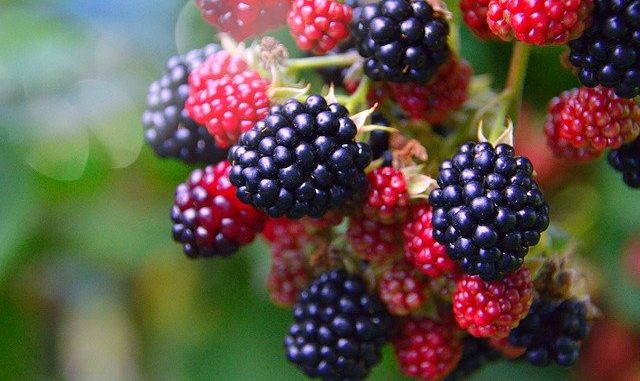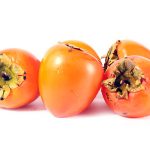
Blackberries are part of that great ‘season of mists and mellow fruitfulness’ as Keats would have put it. Sweet and tart they are a delicious summer and autumn fruit with their red-blackness colour. They are members of the Rosaceae family and genus Rubus. The commonly cultivated variety is Rubus fruticosus. There are other related species and are related to raspberries. They have a similar morphology being an aggregate fruit consisting of numerous drupelets.
The popularity of blackberries is on the increase globally. They are cultivated mainly in Europe and North America (USA) with numerous varieties. The land coverage is similar in both continents. The largest blackberry producing regions in Europe are Serbia where 90% of their production is processed and exported, and Hungary but also Germany and the United Kingdom. Additionally, wild blackberries make a significant contribution to worldwide production (15,000 tons harvested in 2005) (Strik, 2007).
Blackberries are very nutritious. One cup (140 grams) can provide up to more than 30% of the Daily Value (DV) of vitamin C. You can also get 7 grams of fiber and 6 grams of carbohydrates.
The berries are also antioxidant rich. Consuming them is a associated with a reduced risk of particular cancers, chronic inflammation and heart disease.
Colour of Blackberries
The principal colour pigments in blackberries are anthocyanins. This fruit is a very good source of dark red to almost black anthocyanins and they range from 67 to 230mg/100g in fresh fruit (Sellappan et al., 2002; Benvenuti et al., 2004). Cyanidin-3-glucoside and cyanidin-3-rutinoside are the main major and minor anthocyanins in blackberries (Mazza and Miniati 1993). Later studies showed three other types;cyanidin-3-xyloside, cyandin-3-(malonyl)glucoside, and cyanidin-3-glucoside with an unidentified acyl substituent (Fan-Chiang & Wrolstad, 2005).
Processing of fruit resulted in the greatest losses (~67%) over six months of storage. Canning has the least influence on storage stability by processing (17.8% and 10.5% losses) for canned-in-water and canned-in-syrup blended cans, respectively.
One small study showed some interesting results in reducing obesity and improving insulin sensitivity. This 1-week study concerned 27 men who were excessively overweight. They were given a diet high in blackberries which was claimed to increase fat burning as well as ameliorate some of the effects of diabetes.
References
Bowen-Forbes, C. S., Zhang, Y., & Nair, M. G. (2010). Anthocyanin content, antioxidant, anti-inflammatory and anticancer properties of blackberry and raspberry fruits. Journal of Food Composition and Analysis, 23(6), pp. 554-560.
Fan‐Chiang, H. J., & Wrolstad, R. E. (2005). Anthocyanin pigment composition of blackberries. Journal of Food Science, 70(3), C198-C202
Hager, T. J., Howard, L. R., & Prior, R. L. (2008). Processing and storage effects on monomeric anthocyanins, percent polymeric color, and antioxidant capacity of processed blackberry products. Journal of agricultural and food chemistry, 56(3), pp. 689-695 (Article).
Kaume, L., Howard, L. R., & Devareddy, L. (2012). The blackberry fruit: a review on its composition and chemistry, metabolism and bioavailability, and health benefits. Journal of Agricultural and Food Chemistry, 60(23), pp. 5716-5727.
Mazza, G., Miniati, E. (1993). Anthocyanins in fruits, vegetables and grains. Boca Ra-ton, Fla.: CRC Press. 362 pp.
Rommel A, Wrolstad RE, Heatherbell DA. (1992). Blackberry juice and wine: processing and storage effects on anthocyanin composition, color and appearance. J Food Sci 57(2) pp385-391
Strik, B.C. Berry crops: Worldwide area and production systems. In: Berry Fruit: Value-Added Products for Health Promotion, 1st ed.; Zhao, Y., Ed.; CRC Press: Boca Raton, FL, USA, 2007; pp. 3–51
Wang, W. D., & Xu, S. Y. (2007). Degradation kinetics of anthocyanins in blackberry juice and concentrate. Journal of Food Engineering, 82(3), pp. 271-275. .

Leave a Reply